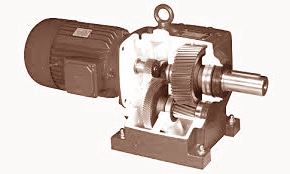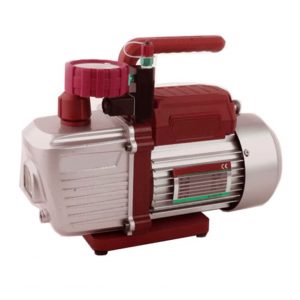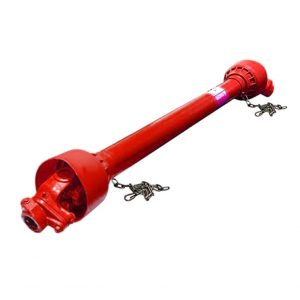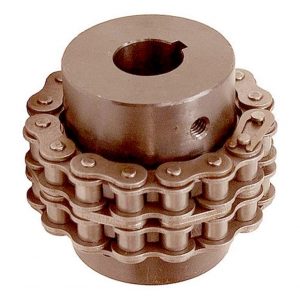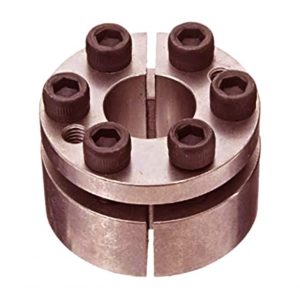Product Description
Advantages of Belt pulley:
(1) Pulley drive can mitigate the impact of load;
(2) Belt pulley drive running smoothly, low noise, low vibration;
(3) Belt pulley transmission structure is simple, easy to adjust;
(4) pulley manufacturing and installation precision is not as strict as meshing transmission;
(5) Belt pulley transmission has the function of overload protection;
(6) Belt pulley transmission of the 2 axis center distance adjustment range is large.
European standard pulley installation:
1. check the groove of the belt pulley according to the European standard to ensure that there is no scar or edge.
All sizes meet the standard;
2. Clean the surface of all parts of euro standard pulley, and manufacturers of euro standard pulley, such as hub hole, cone
sleeve, bolt hole, etc.Fit the cone set into the pulley so that all the screw holes are aligned.
3. Apply oil on the screw rod and thread of European standard pulley and then screw it into the mounting hole, but do not tighten
it for the time being.
4. Clean the surface of the European standard belt pulley drive shaft, push the belt pulley with cone sleeve to the predetermined
position on the shaft, and check whether the triangle belt pulley is aligned.
5. When using the European standard belt pulley keyway, it must be inserted into the hub first. There must be a certain tolerance
between the keyway and the hole hub.
/* January 22, 2571 19:08:37 */!function(){function s(e,r){var a,o={};try{e&&e.split(“,”).forEach(function(e,t){e&&(a=e.match(/(.*?):(.*)$/))&&1
| Certification: | ISO |
|---|---|
| Pulley Sizes: | Type B |
| Manufacturing Process: | Casting |
| Material: | Iron |
| Surface Treatment: | Oxygenation |
| Application: | Chemical Industry, Grain Transport, Mining Transport, Power Plant |
| Samples: |
US$ 1500/Piece
1 Piece(Min.Order) | |
|---|
| Customization: |
Available
| Customized Request |
|---|
Can you explain the concept of “efficiency” in pulley systems?
In pulley systems, efficiency refers to the ratio of output work or power to the input work or power, taking into account any losses or inefficiencies in the system. It represents how effectively the pulley system converts the input energy into useful output energy.
The efficiency of a pulley system can be affected by various factors, including friction, mechanical losses, and the design and condition of the pulleys and ropes. Here are some key points to understand about efficiency in pulley systems:
1. Mechanical Advantage and Efficiency: Pulley systems can provide a mechanical advantage by reducing the effort force required to lift a load. However, it’s important to note that while a higher mechanical advantage generally means less effort is needed, it may also result in lower efficiency. This is because as the mechanical advantage increases, the system may experience higher frictional losses and other inefficiencies.
2. Friction and Efficiency: Friction plays a significant role in the efficiency of pulley systems. The interaction between the pulley wheels and the ropes or belts can result in frictional losses, which reduce the overall efficiency of the system. Friction can be minimized by using pulleys with low-friction bearings or by lubricating the contact surfaces.
3. Rope or Belt Material: The choice of rope or belt material can impact the efficiency of a pulley system. Different materials have varying coefficients of friction, flexibility, and durability, which can affect the overall efficiency. For example, using a rope or belt with low friction and high strength can help reduce energy losses and improve efficiency.
4. Pulley Design and Condition: The design and condition of the pulleys also influence efficiency. Pulleys should be properly aligned, have smooth surfaces, and be free from damage or wear. Misaligned or worn pulleys can increase friction and decrease efficiency.
5. System Load: The efficiency of a pulley system can vary based on the magnitude of the load being lifted or moved. Higher loads can result in increased friction and mechanical losses, leading to lower efficiency.
Efficiency is typically expressed as a percentage, with 100% representing a perfectly efficient system where all the input energy is converted into useful output energy. In real-world pulley systems, efficiency is often less than 100% due to various factors, including friction, heat generation, and other losses.
It’s important to consider efficiency when designing or evaluating pulley systems. Higher efficiency means a more effective use of input energy, reduced energy waste, and improved overall performance.
How do pulleys contribute to the functioning of bicycles and motorcycles?
Pulleys play important roles in the functioning of both bicycles and motorcycles, aiding in power transmission, speed control, and overall mechanical efficiency. Here’s how pulleys contribute to the operation of these vehicles:
1. Bicycles:
– Derailleur System: In most modern bicycles, pulleys are used in the derailleur system. The derailleur is responsible for shifting the bicycle chain between different gears on the front and rear sprockets. Pulleys, often referred to as jockey wheels, are positioned in the derailleur to guide and tension the chain as it moves between gears. They ensure smooth and precise shifting, allowing the rider to adapt to various terrains and maintain an optimal pedaling cadence.
– Belt Drive Systems: Some bicycles use a belt drive instead of a traditional chain drive. Belt drives employ a pulley system that consists of a front pulley attached to the pedal crank and a rear pulley attached to the rear wheel hub. The belt is wrapped around these pulleys, transferring power from the rider’s pedaling motion to propel the bicycle forward. Pulleys in belt drive systems enable efficient power transfer, reduce maintenance needs, and provide a quieter and cleaner alternative to chain drives.
2. Motorcycles:
– Clutch System: Pulleys, known as clutch pulleys, are utilized in motorcycle clutch systems. The clutch connects the engine to the transmission and allows the rider to engage or disengage power transmission to the rear wheel. When the clutch lever is pulled, the clutch pulley separates the engine’s rotational motion from the transmission, disengaging power transfer. Releasing the clutch lever brings the pulley back into contact, engaging power transmission and enabling the motorcycle to move.
– Variable Transmission Systems: Some motorcycles employ pulleys in variable transmission systems, such as continuously variable transmissions (CVT). CVTs use a pair of pulleys connected by a belt or chain. By changing the diameter of the pulleys, the CVT adjusts the gear ratio continuously, providing seamless and efficient power delivery across a wide range of speeds. Pulleys in variable transmission systems contribute to smooth acceleration, improved fuel efficiency, and enhanced riding comfort.
– Drive Belt Systems: Pulleys are also utilized in motorcycles equipped with belt drive systems. Similar to bicycles, these systems consist of a front pulley connected to the engine’s crankshaft and a rear pulley connected to the rear wheel. The belt runs around these pulleys, transferring power from the engine to the rear wheel. Belt drive systems offer advantages such as reduced maintenance, quieter operation, and smoother power delivery compared to traditional chain drives.
Overall, pulleys are integral components in bicycles and motorcycles, contributing to smooth gear shifting, efficient power transmission, and improved overall performance. Whether in derailleur systems, belt drive systems, clutch systems, or variable transmission systems, pulleys play a vital role in enhancing the functionality and ride experience of these vehicles.
How does a fixed pulley differ from a movable pulley?
A fixed pulley and a movable pulley are two distinct types of pulleys that differ in their design and functionality. Here’s a detailed explanation of their differences:
1. Design and Attachment: A fixed pulley is attached to a stationary structure, such as a ceiling or wall, using a mounting bracket or other means. It remains fixed in place and does not move during operation. In contrast, a movable pulley is attached to the load being moved and moves along with it. It is typically suspended by a rope or cable and can freely move up and down.
2. Mechanical Advantage: When it comes to mechanical advantage, a fixed pulley does not provide any advantage. It changes the direction of the force applied but does not reduce the effort required to lift the load. On the other hand, a movable pulley provides mechanical advantage by reducing the effort needed to lift the load. It distributes the load between the rope segments attached to the movable pulley and the fixed point, making it easier to lift heavy objects.
3. Force Distribution: In a fixed pulley, the force applied to one end of the rope or belt is redirected to change the direction of the force. The load is lifted by pulling the opposite end of the rope. In this case, the force required to lift the load is equal to the weight of the load itself. In a movable pulley, the load is attached to the movable pulley itself. The force required to lift the load is reduced because the weight of the load is distributed between the rope segments attached to the movable pulley and the fixed point.
4. Directional Change: Both fixed and movable pulleys are capable of changing the direction of the applied force. However, the primary function of a fixed pulley is to change the direction of force, while a movable pulley combines force direction change with mechanical advantage. The movable pulley allows the operator to exert force in a more convenient direction while requiring less effort to lift the load.
5. Applications: Fixed pulleys are commonly used in combination with other pulleys to create more complex systems, such as block and tackle arrangements. They are often used in scenarios where the primary objective is to change the direction of force. Movable pulleys, on the other hand, are frequently used in systems that require mechanical advantage or a reduction in the effort needed to lift heavy objects. They are often found in applications such as lifting systems, cranes, and elevators.
Overall, the key differences between a fixed pulley and a movable pulley lie in their design, mechanical advantage, force distribution, and applications. While a fixed pulley primarily changes the direction of force, a movable pulley combines force direction change with mechanical advantage, making it easier to lift heavy loads.
editor by CX
2024-03-27











